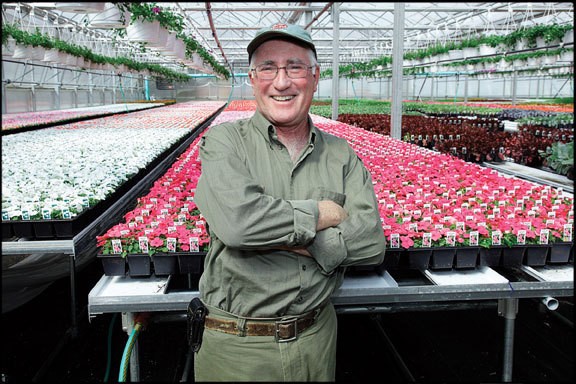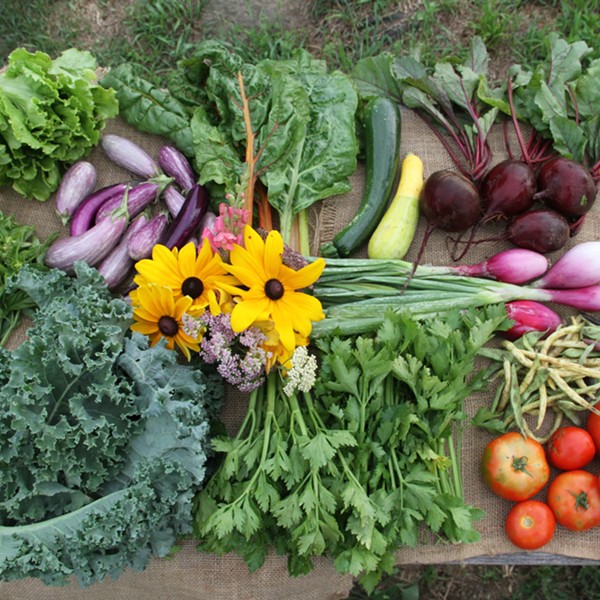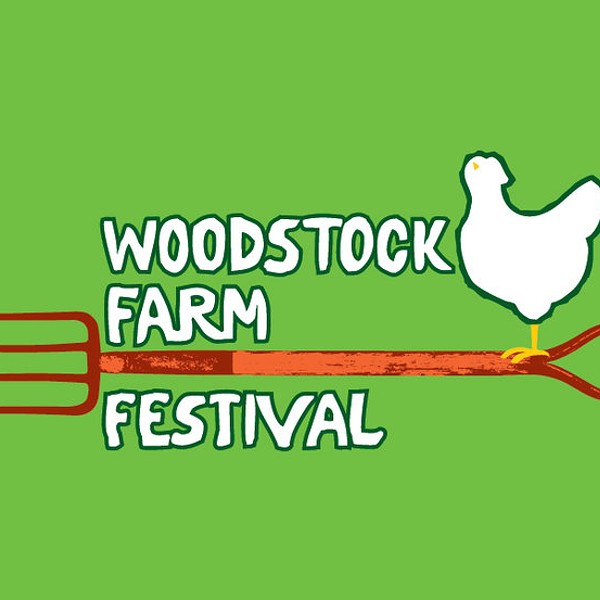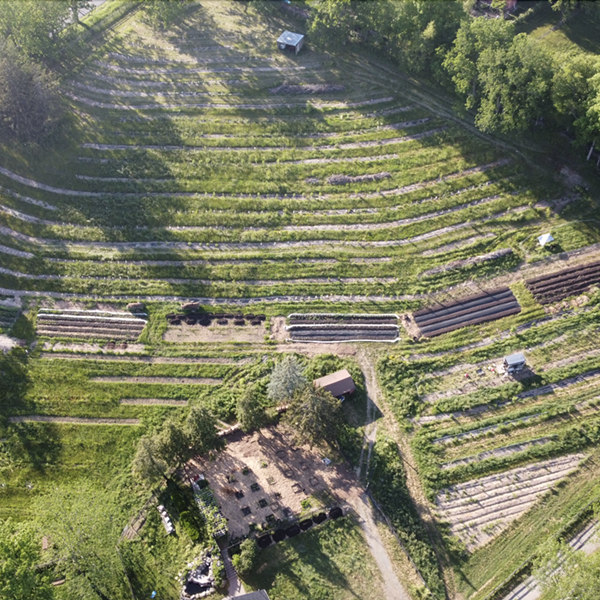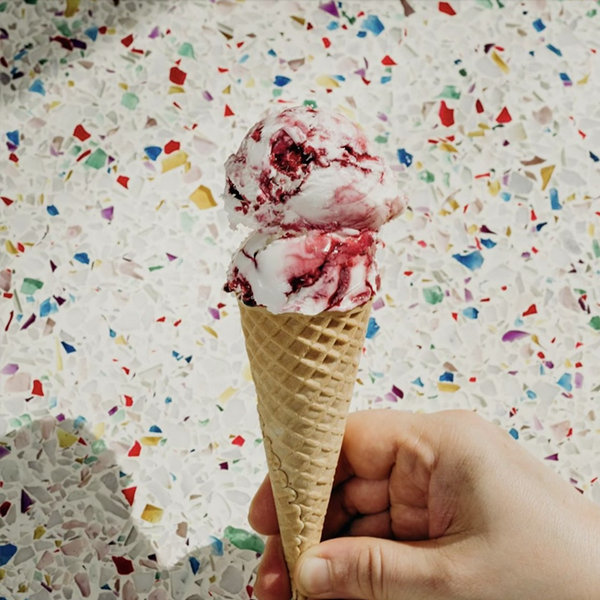Mark Adams is the president of the Dutchess, Putnam, and Westchester County chapters of the New York Farm Bureau. His five-acre greenhouse complex in Poughkeepsie—which began as a small family farm—houses more than two million bedding plants grown from seed, in addition to 300,000 hardy perennials, 110,000 mums, and 80,000 poinsettias every year. Adams Greenhouses supplies flowers, fruits, and vegetables to a number of farms, sanctuaries, campuses, and garden centers all over the country, as well as all of the Adams Fairacre Farms stores in the Hudson Valley.
The author of Let’s Grow! Gardening in Dutchess County and Beyond (2005, Fountain Press), Adams is also an award-winning garden writer whose weekly column appeared in the (recently defunct) Taconic Weekend for 24 years. He also writes songs and occasionally performs locally, accompanying himself on guitar and harmonica. In addition to original material, Adams has also produced three albums of “greenhouse-parody” songs that set the inside jokes of the greenhouse business to popular folk tunes—his fourth album, Spraying Without My Mask is currently in the works. Like many avid gardeners, Adams is also a foodie, and his enjoyment of off-the-beaten-path travel destinations allows for an unusually adventurous palate. When he isn’t running his business, working to develop Farm Bureau policies, writing articles, digging in his garden, or doing a mean Bob Dylan/Johnny Cash/Tom Waits cover, you might find Mark Adams at a Mensa picnic (but only if you, too, are a card-carrying genius).
So it started with a small family farm?
My grandfather, who was about three years old when he came to America with his father in the early 1900s, bought the farm here [in Poughkeepsie]. “Adams Fairacres Farm,” he called it. He and my great-grandfather were both farmers. There were thousands of people growing vegetables here back then, especially tomatoes and cucumbers, because the IBM factory in Fishkill used to be a cannery; they made pickles and canned tomatoes. Then it turned into a bomb warehouse during World War II. But after the war, there was a huge boom in population. The Interstate Highway System hadn’t been built yet, and it was costly to ship things, so there was a huge boom in agriculture. It was a real flush time, everybody got in the apple business, poultry business, dairy business. People would go to college to study “pomology.” Who goes to Cornell and studies pomology, you know? My father came back and started an apple orchard, while my grandmother and grandfather continued with the farm, until one day they decided to put some stuff out by the road and sell it. And that started to work out. In 1960, my father and my uncle built the first store and began selling local produce. In 1970, I dropped out of college in the middle of my junior year—I couldn’t take it anymore; there were all sorts of protests—I came home and my dad put me to work on the farm, managing a few greenhouses; and a few years later, I bought the greenhouse business from him.
What goes on in the Farm Bureau? What issues are hot right now?
The Farm Bureau works with legislators and lobbyists to help pass laws that help farmers. For example, we try to make sure that farmers don’t have to pay too many taxes on land because farmers use a lot of it, and property taxes are tough on farmers, because our land is our production. So we came up with a plan for taxation according to the value of our agricultural land, the “ag value.” Someone can’t take a piece of property that you’re growing corn on and say, “What would this land be worth if a big company had a factory here?”—which is what they were doing. They were taxing it for its “full, highest, and best-use” value, but now it’s taxed according to its ag value. The Farm Bureau did that.
This year, again, we’ve been having a lot of debates about industrial hemp. Every year, a lot of people are in favor of legalizing hemp production, because it’s a farm product. Hemp production is legal in Canada, and we use a lot of hemp for industrial purposes—not just rope, but mattress stuffing and all kinds of stuff. The United States imports it, because it’s not legal to grow. But a lot farmers, especially around places like Minnesota, they see all of this hemp coming in from over the border, and it’s a profitable crop. And they want to grow hemp. They figure, “Hey if we’re importing it over here and using it, why can’t we grow it too?” But it’s cannabis, it’s illegal to grow it in the US. But the funny thing is that the marijuana growers—and we don’t, of course, officially have marijuana growers in the Farm Bureau—don’t want hemp to be legalized because cannabis is open-air pollinated. So low-grade industrial hemp pollen would come breezing through their fields and wrecking their sinsemilla. Nobody wants that.
What other challenges have local agribusinesses been facing?
For one, the markets have been getting farther away. One time I was talking to the New York State Agriculture Commissioner, and he asked me, “What can we do to help agriculture in the Hudson Valley?” And I said, “Close the Interstate Highway System. Because that’s what screwed it all up. Back when you didn’t have such good transportation, everything had to be grown locally.”
You’re an aficionado of what some might call “fringe cuisine.” Can you give me an example?
The weirdest thing I’ve eaten was probably the mice [in Zambia], because they roast them in grills over fires made with kerosene. In Iceland, if a whale is beached and dies, they cut it up and serve the meat in restaurants—but the blood doesn’t drain out of it when it dies naturally. It was the most horrible thing I think I ever ate. It’s between the mice and the whale.







